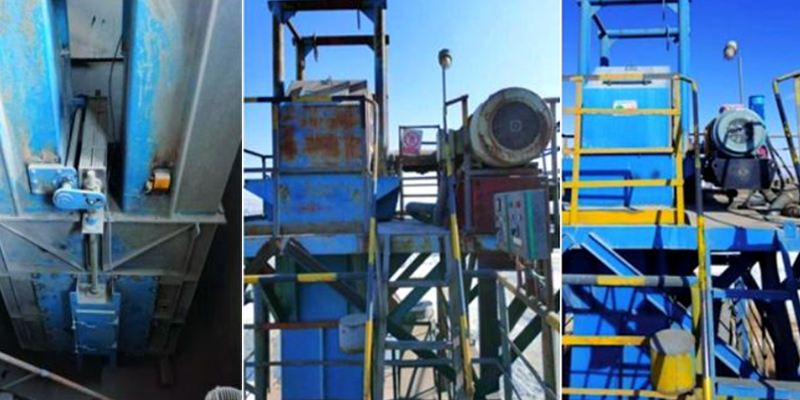The dust problem during dry fly ash loading is a major issue at coal-fired power plants. This dust harms the environment, damages equipment, and poses health risks to workers. This document explains the main reasons for dust during the loading process, analyzing problems in design, equipment, and operation. We then offer practical solutions to control the dust, providing valuable reference for similar bulk handling equipment like Cement Loading Chute, Loading Chute for Aggregate, and Mobile Bulk Loader.
1. Introduction
Dust from fly ash is a serious problem in coal-fired power plants. It dirties the site, can damage machinery, and is unhealthy for people to breathe. The ash silo is a primary source of this dust. While some dust comes from broken filter bags or leaking pipes, the most frequent and challenging source is the dry ash loading process. This problem is common to various Powder Bulk Loader systems, and this report focuses on solving it.
2. How the Dry Ash Loader Works
A dry ash loader transfers fly ash from the storage silo into trucks. Its main parts are a lifting device, a central loading chute, a dust collection sleeve, a loading head, and a dust collector. The equipment functions similarly to other Bulk Loader systems.
First, a truck positions itself under the loading head. The operator then lowers the loading head onto the truck’s inlet. Next, the dust collector and the ash discharge machine start. Ash falls down the central chute into the truck. Meanwhile, the dust collector pulls air and dust through the space between the chute and the outer sleeve. It captures the dust and releases clean air. When the truck is full, the system stops the ash flow, shuts down the dust collector after a short delay, and finally raises the loading head.
3. Why Dust Happens
3.1 Design Problems
-
The dust collector or fan is too small. It cannot handle the large volume of air pushed out of the truck during fast loading, a common issue in bulk material handling systems.
-
The gap between the loading chute and the dust collection sleeve is too narrow. This restricts airflow.
-
The loading chute is too short. The falling stream of ash clashes with the upward suction airflow, which causes dust.
-
The cone-shaped loading head is a poor design. It requires perfect truck alignment, otherwise it leaks air and dust.
3.2 Equipment Problems
-
The dust collector does not perform as designed. Clogged pipes, blocked filter bags, or a weak fan reduce its effectiveness.
-
The flexible dust sleeve collapses. This happens because the clamps are too weak or too far apart, blocking the air passage.
-
The truck’s level sensor fails. It does not signal the system to stop feeding ash, so the truck overflows.
3.3 Operational Problems
-
The ash flow rate is too high. Too much ash pushes air out of the truck too quickly, especially at the start when the ash is hot and expands the air inside.
-
Operators make mistakes. They may not position the truck correctly or fail to use sealing gaskets properly.
-
Maintenance is poor. Nobody fixes clogged filters, broken pulse-jet cleaners, or worn-out fan blades.
4. How to Control the Dust
The key is to maintain a slight vacuum inside the truck tank. This ensures that all dusty air gets pulled into the dust collector.
4.1 Design Improvements
-
Use a correctly sized dust collector. Its capacity must match the maximum ash loading rate and account for air expansion and leaks, which is crucial for any Powder Bulk Loader.
-
Install better seals. Use a hemispherical loading head or inflatable seals to prevent leaks.
-
Ensure a sufficient gap in the loading chute assembly. The radial gap between the chute and the sleeve should be at least 150 mm.
-
Lengthen the loading chute. It should extend 80-100 mm past the dust collection hood to separate the ash stream from the air stream.
4.2 Equipment Upgrades
-
Prevent the dust sleeve from collapsing. Add more clamps or replace the flexible sleeve with a rigid, telescoping metal pipe, similar to those used in advanced Mobile Bulk Loader designs.
-
Use a more durable loading chute. Replace fabric chutes with telescoping steel ones.
-
Improve the loading head design. A spherical head connects better to the truck inlet than a conical one.
-
Install more reliable level controls. Use pressure switches instead of level switches because they handle dust better.
4.3 Operational Best Practices
-
Follow correct procedures. Position the truck accurately and ensure the loading head seals tightly.
-
Control the loading speed. Start loading slowly and reduce speed before stopping to prevent dust, a best practice for all Bulk Loader operations.
-
Perform regular maintenance. Clean or replace filter bags, fix air jets, and repair damaged parts on time.

5. Conclusion
Controlling dust during ash loading is essential for a safe, clean, and efficient power plant. We can solve this problem by focusing on three areas:
-
Optimize Design: Use properly sized equipment and good seals, learning from best practices in Cement Loading Chute and Loading Chute for Aggregate applications.
-
Upgrade Equipment: Install more robust and reliable components, embracing innovations from the Mobile Bulk Loader and Powder Bulk Loader industry.
-
Standardize Operations: Train staff to follow correct procedures and maintain equipment regularly.




